The Rail Kitchen Chikugo: Nishitetsu’s Restaurant on Rails
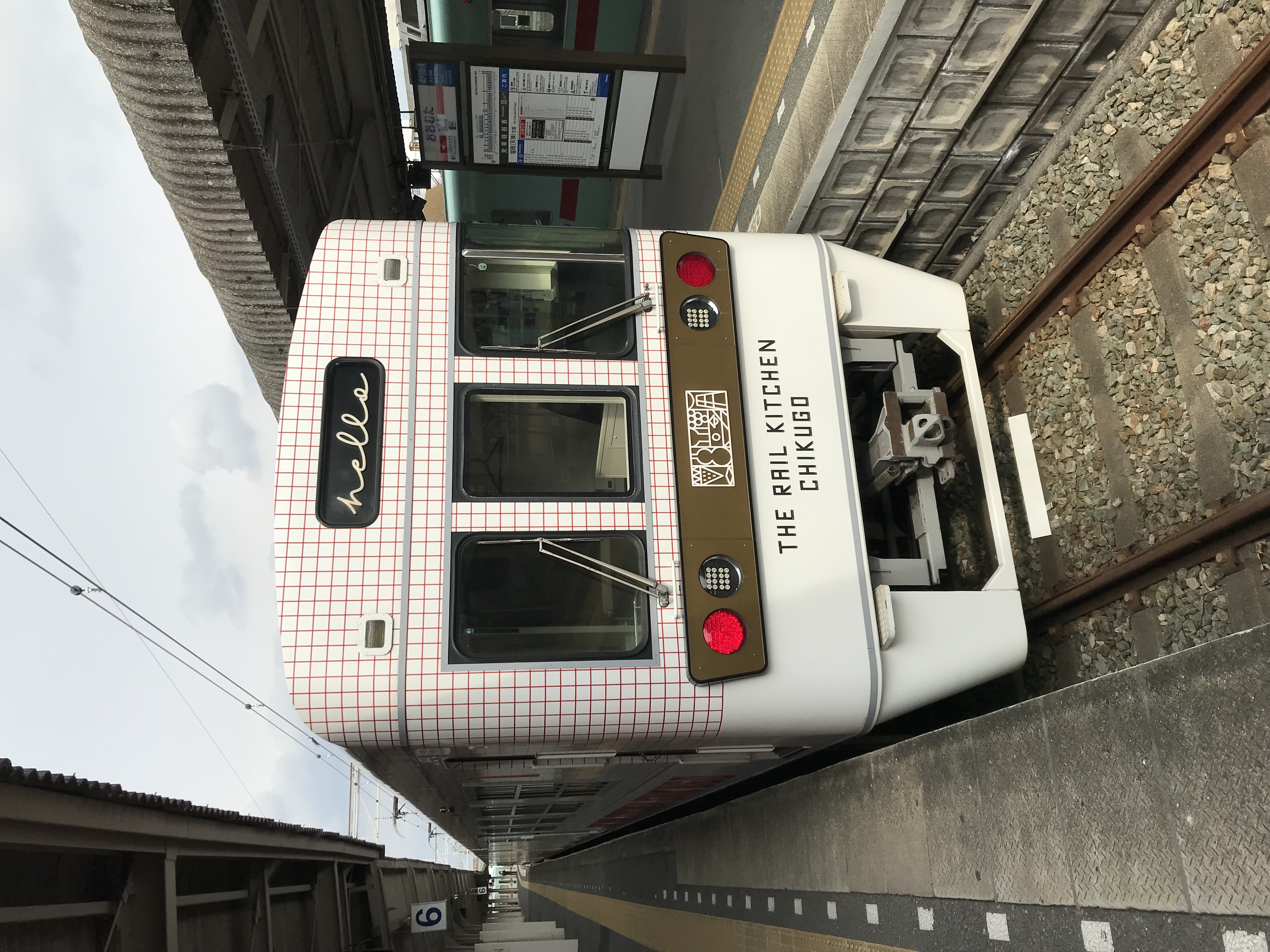
Japan is a country obsessed with trains. Whether you are riding Tokyo’s Yamanote Line across the city, or taking the Shinkansen to Fukuoka, Japan wows with their clean, efficient, and rapid transit. In recent years, several Japanese rail companies began offering tourist trains as part of their services. Notable tourist trains, or “joyful trains,” include JR Kyushu’s Seven Stars in Kyushu, and JR East’s Train Suite Shiki-Shimi. Since I do not have $9,000 USD to spend on a luxurious cruise train, I rode Nishitetsu’s Rail Kitchen Chikugo instead for roughly $80.00 USD.
About The Rail Kitchen Chikugo
The Nishi Nippon Railroad Company, or Nishitetsu, launched the Rail Kitchen in 2019. The train offers a café course between Tenjin and Dazaifu stations, a lunch course between Tenjin and Omuta, and a dinner course from Omuta to Tenjin. Each course features a seasonal menu crafted with local ingredients sourced in Fukuoka Prefecture. Examples include strawberries from Kurume, wagyu from Hakata, and an orange welcome drink from Omuta.
The menu is seasonal and changes every few months. I got to try the December 2021 – February 2022 lunch course, which consisted of Soybean and Celery soup, an assortment of locally grown vegetables, Hakata Wagyu cotoletta, and a delicious cream cheese dessert.
About The Chikugo Region
The Chikugo Region consists of the part of Fukuoka Prefecture south of the Chikugo River. This region is famous for its agriculture, for Hanten jackets, and for coal mining. Notable places include Kurume, Yame, Yanagawa, and Omuta. The region was also home to prisoner of war camps which housed American POWs during World War II. These days, like many parts of Japan, the economy is declining due to an aging population, and younger people moving to larger cities. The Rail Kitchen Chikugo, like other tourist trains, aims to bring economic prosperity to the region.
The Rail Kitchen Experience

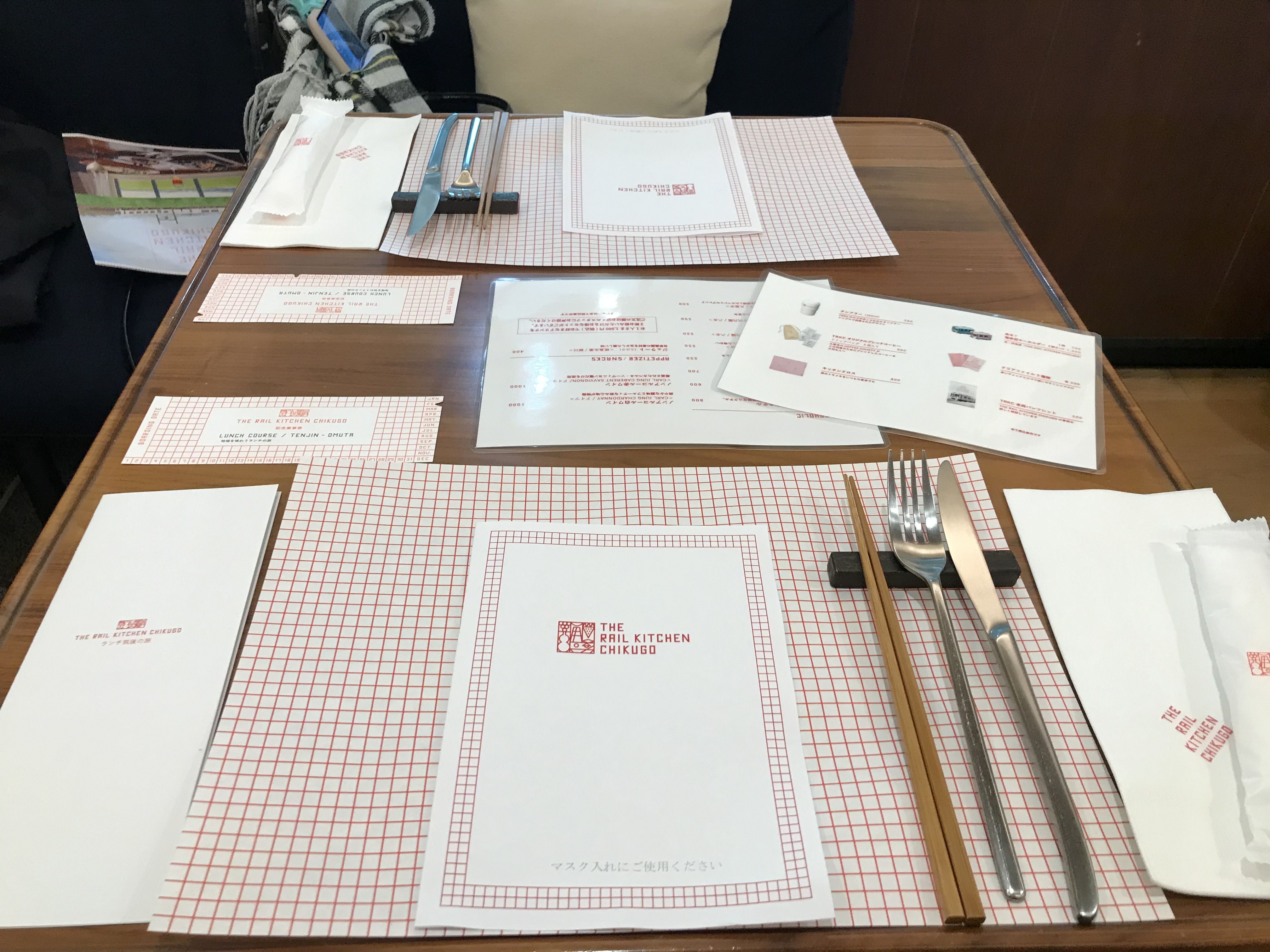
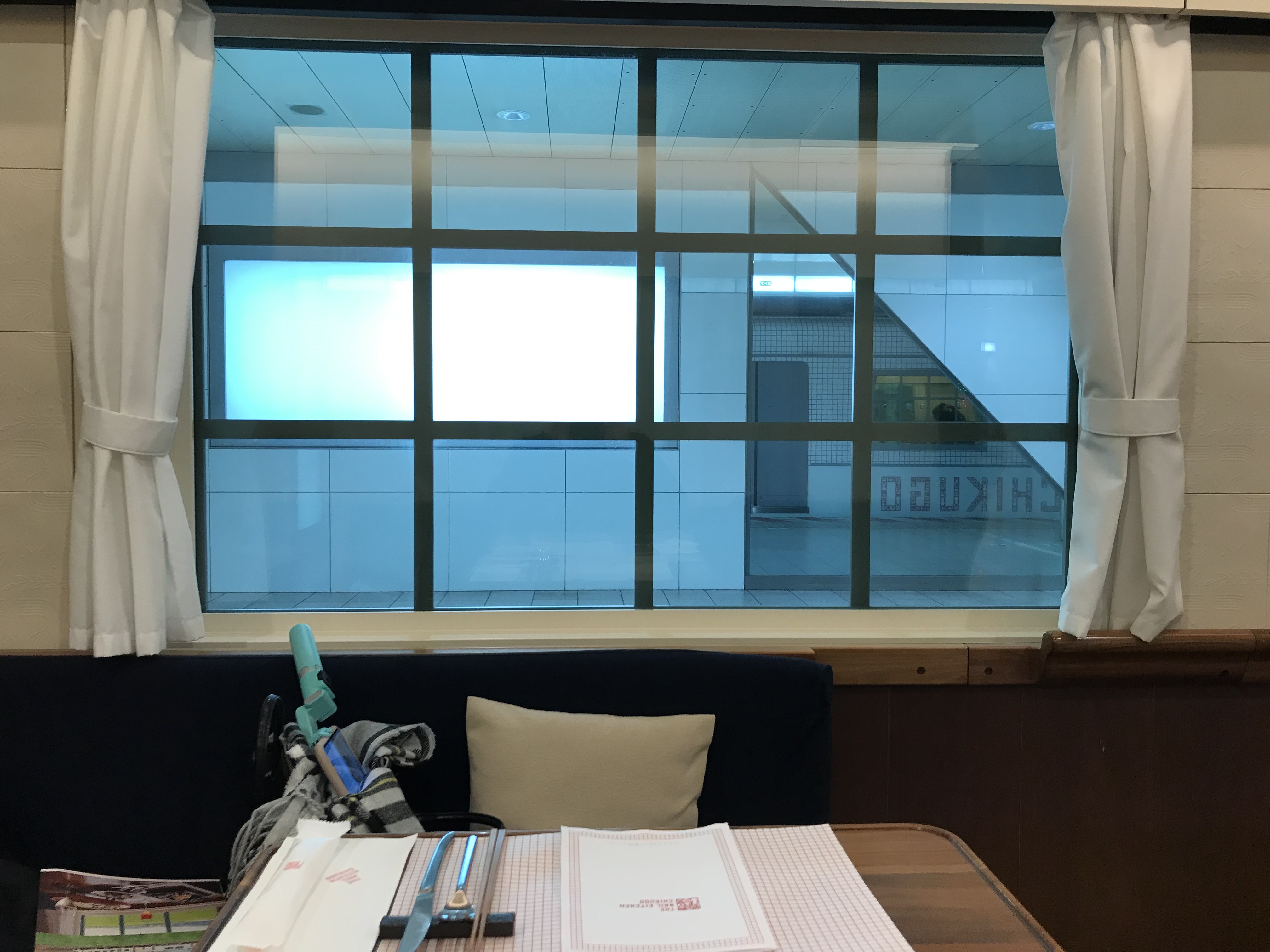
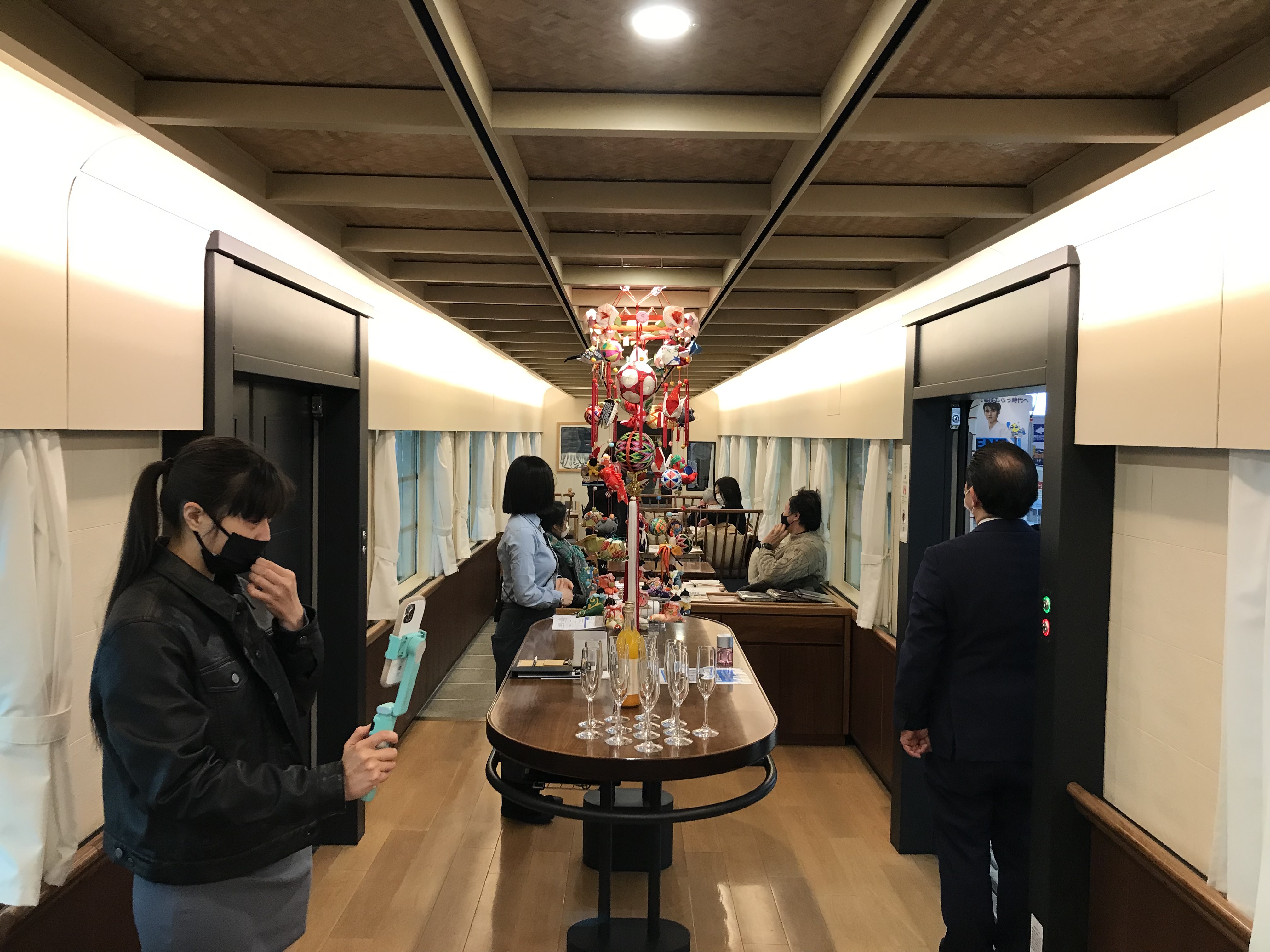
I booked my reservation on the Rail Kitchen website and reserved two tickets. I decided to invite my friend, and Japanese teacher, Aika along for the journey. Since the Rail Kitchen operates on weekends and holidays, we decided to go on the Emperor’s Birthday (February 23rd of the Reiwa Era).
We settled on the Lunch Course, which departed from Nishitetsu Fukuoka (Tenjin) Station bound for Omuta. The journey took two-and-a-half hours and took us past suburbs, farmland, and shrines.
We arrived at Tenjin Station and checked in with the ticket office. While there, they asked us if we were departing at Yanagawa, or continuing to Omuta. Next, the friendly ticket staff offered us return tickets back to Tenjin for only 550 yen per person. We decided to get the discounted return ticket as we had no plans for Omuta that day.
Next, we waited for the three-car train to arrive. The friendly and energetic staff allowed us to take pictures of the train, and even had a photo area with a bench in front of the train. Once Aika and I took a photo together, we boarded Car 3 and took our seats.
The interior was reminiscent of a simple yet elegant Italian restaurant, with dark woods and muted colors. Fabrics were blue and the atmosphere was calm and relaxing. There was even a sagemon, or traditional hanging mobile, which greeted guests as they boarded the train.
We departed Tenjin Station shortly before 12:00 PM and began our two-and-a-half hour, multi-course journey.
Welcome Drink
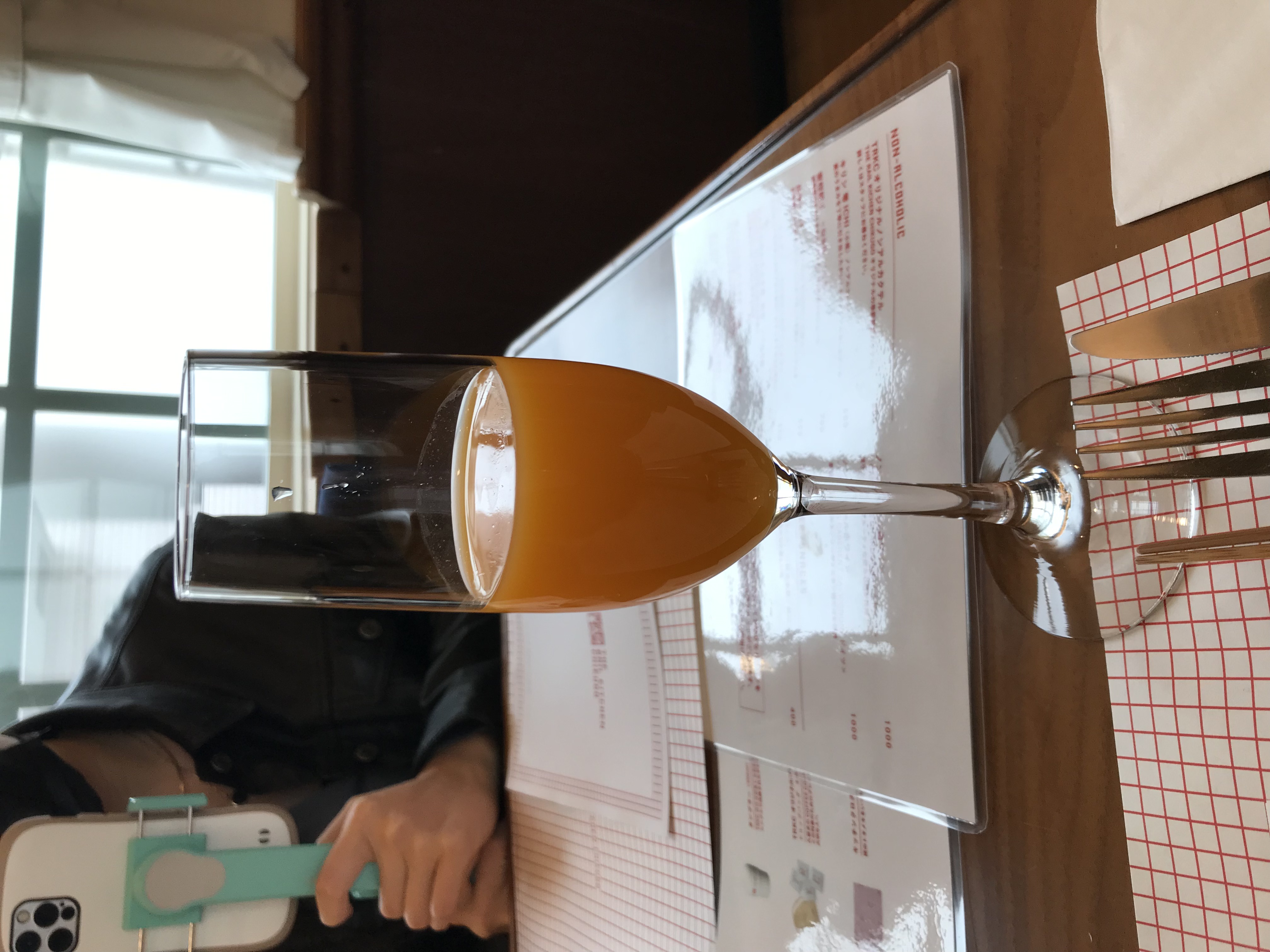
Normally, guests over 20 years of age are given an alcoholic welcome drink. Due to the quasi-state of emergency thanks to Corona-Chan, we were served non-alcoholic orange juice from Omuta City. This was an incredible welcome drink; it was sweet but not too acidic. Rather mellow and smooth for what is essentially fancy orange juice. I knew the journey was going to be good from first sip. This marked the beginning of lots of moans and “sugoi” (amazing) remarks.
Course 1: Soybean and Celery Soup

Today’s culinary journey started with a bowl of soybean and celery soup. The balanced yet delicious soup was a tasty way to begin the journey. Due to dietary restrictions, this soup was merely a treat for me as it contained cream. I’ll admit I found myself devouring more soup than I allowed myself to.
Course 2: Locally Grown Vegetables from Oki-Town
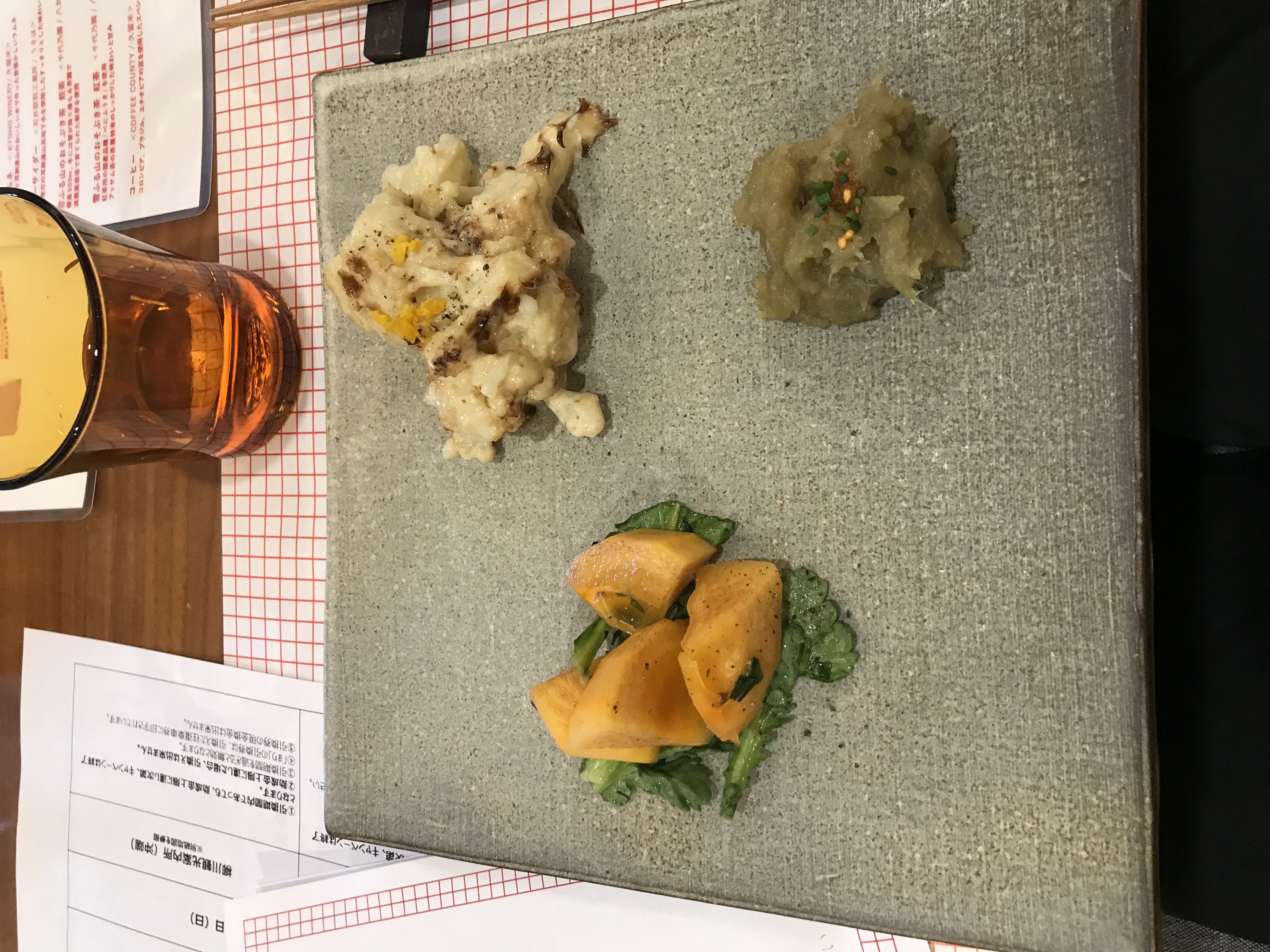
Our second course consisted of a vegetable plate made with the following: Grilled cauliflower with anchovy mayonnaise; roasted sweet potato puree; and persimmon, garland chrysanthemum, and basil salad. I never knew vegetables could taste so good. The persimmon was prepared in a delicious vinegar which enhanced its flavor, while the cauliflower was savory with every bite. It was a symphony of flavors and textures which danced in my mouth with every bite. In addition, I was surprised to learn the cauliflower was made with anchovies, as it did not taste fishy. This plate was one of my favorite parts of the meal.
Course 3: The Meat Plate

As we approached Kurume Station, we were served our meat course. The meat plate consisted of Hakata Wagyu beef Cotoletta with Chinese cabbage salad. The plate was alright. The beef cutlet was well-done, yet tender and juicy. The breading, however, had a nutty taste which didn’t go well with the dish. Maybe the oil was old? I don’t know. This was the one component of the meal I felt I could have prepared better. The salad was alright, but it was tasty and delicious. I felt portions were right, and the meal balanced.
Course 4: Pizza
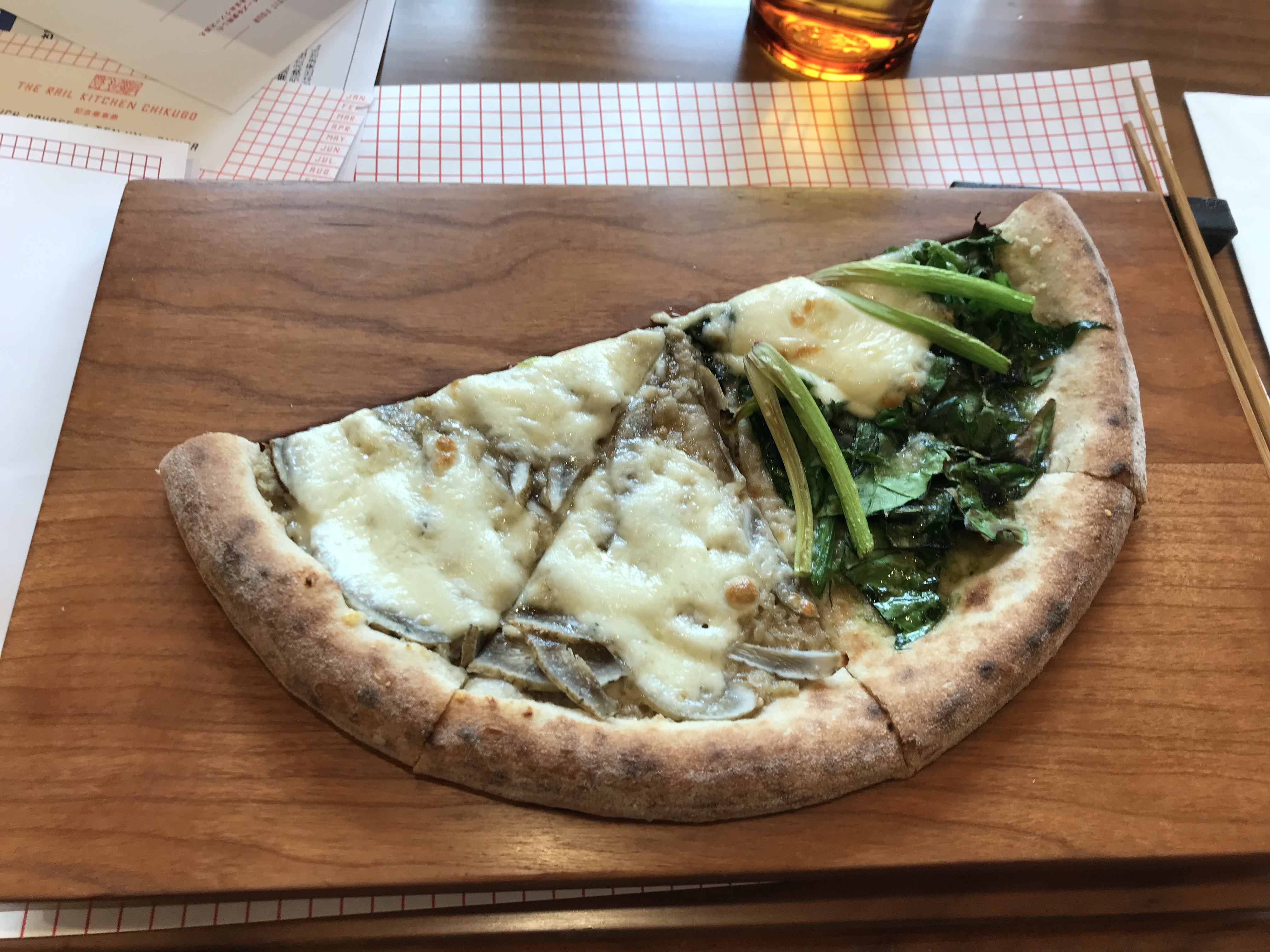
The pizza was delicious and unique. It was prepared with spinach and burdock grown in Oki-town, which is famous for its produce. The wheat was also locally sourced from Fukuoka Prefecture’s Tsukushi Plain, which is the second-largest wheat producing region in Japan, after Hokkaido. Interestingly, no tomatoes were used in this pizza, but it did not need any. The spinach half of the pizza was amazing; hands down the best thing I ate during the course. The burdock side was also tasty, albeit a little more earthy and crunchy in texture.
Course 5: Dessert
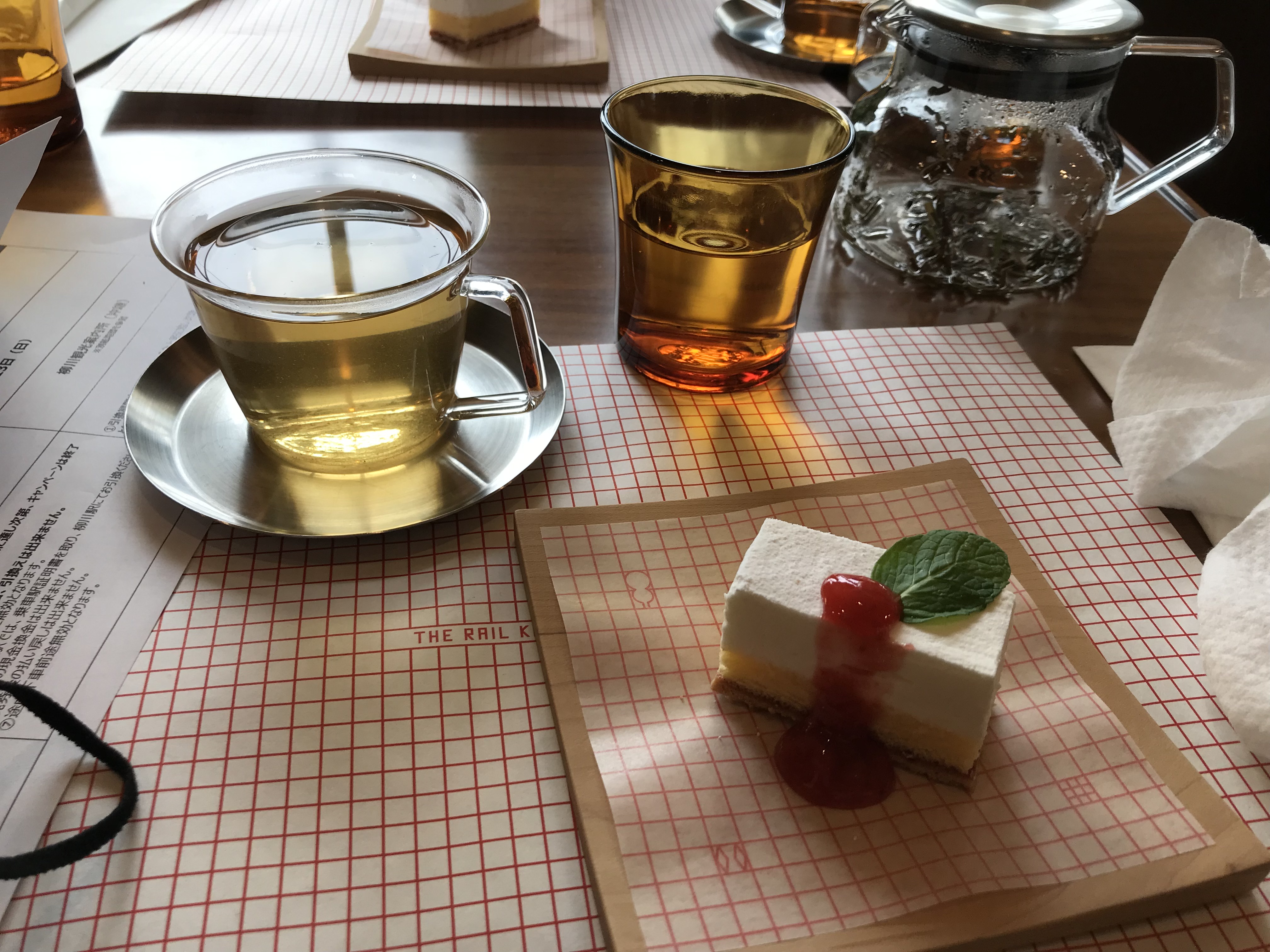
Today’s dessert was created by Imuri, a confectionery shop specializing in Western-style desserts for the Japanese palate. The dessert was a Fromage Cru using Kyushu cream cheese with Amaou strawberry sauce. It was sweet, light, airy, creamy, and overall satisfying. It was an excellent way to conclude our rail kitchen journey as we pulled into Omuta Station. We not only traveled through Fukuoka Prefecture, we also tasted our way through it.
Other Highlights
Throughout our journey, locals waved us hello and waved flags as we passed by stations and crossings. It was a unique and touching way to connect with the local community, who take great pride in the Rail Kitchen. Often, the train slowed at specific crossings so we, and the locals, could wave to each other in passing.
In addition, while waiting at Hanabadake Station in Kurume, the driver broke out into song. You could tell how passionate he was about his job, and he shared his passion with us. I got up and danced along, practicing the art of not taking myself too seriously in the process. We had a great time. In fact, I would say the singing driver made our experience. Nishitetsu, give this man a raise!
Aika and I also bought some souvenirs on board. I bought a key chain, and some coffee to send to America, while Aika bought a commemorative folder.
Conclusion
You must ride the Rail Kitchen Chikugo while visiting Fukuoka Prefecture. For those of you taking the lunch course, I suggest disembarking at Yanagawa Station and board one of the city’s famous canal boats. For those of you continuing to Omuta, there is a zoo and science museum there, but not much else. As I said earlier, the Chikugo Region is declining, but the Rail Kitchen is there to help revitalize it.
If you have food allergies or dietary restrictions, please notify Nishitetsu in advance. To the best of my knowledge, they do not accommodate dietary restrictions, but I’m sure they accommodate allergies.
3 Replies to “The Rail Kitchen Chikugo: Nishitetsu’s Restaurant on Rails ”
Is this course one way train?
Hi Judy, yes, this course is a one-way train. Nishitetsu sells return tickets at a discounted rate if you take the Rail Kitchen Chikugo